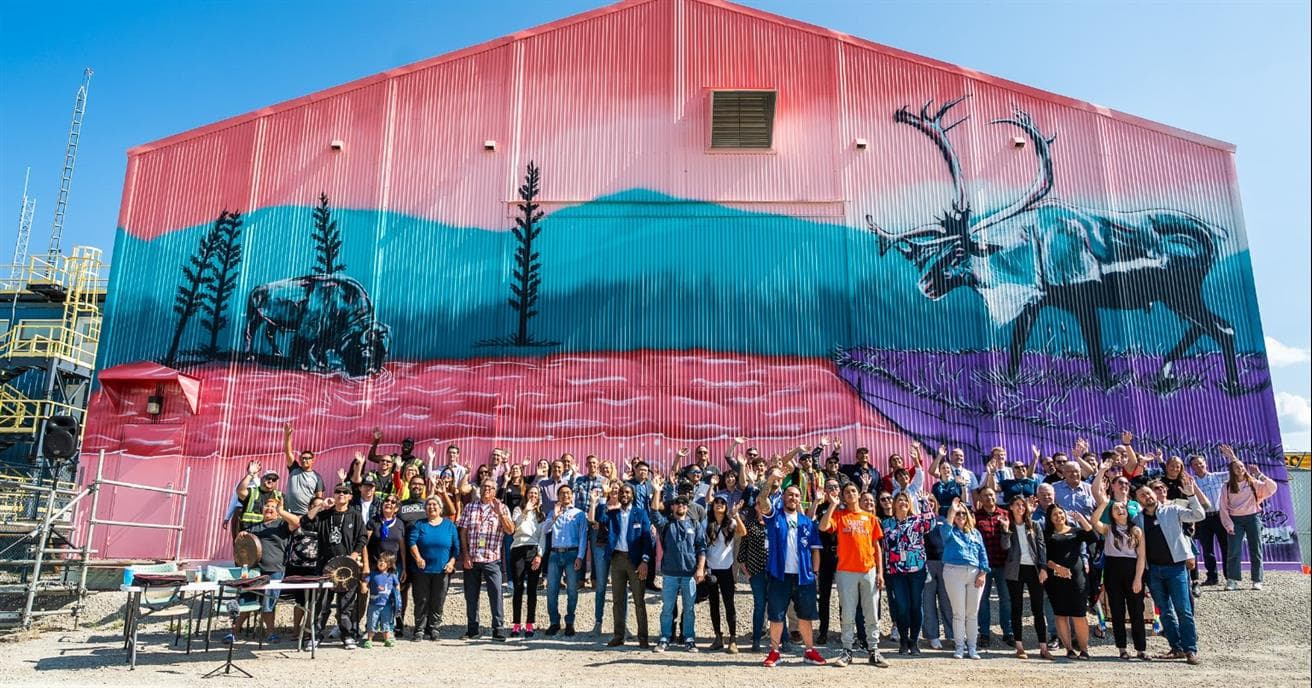The mural was commissioned by Suncor to help strengthen its relationships with the Indigenous communities in the region and give the over 300,000 passengers that fly in and out of Firebag a year something to reflect on.
“Regular maintenance, including new paint, was planned for the firehall so we took the opportunity to look at the work in a more meaningful way,” explains Genevieve DaCambra, Manager of Aviation for Suncor.
The mural that graces the 60-foot-wide by 40-foot-high wall of the firehall was created by Keegan Starlight, an artist from Tssut’ina First Nation in Treaty 7 near Calgary. It is the largest Indigenous mural on a corrugated metal surface in Canada.
“I wanted to try something that was a challenge for me,” says Keegan. “It was an easy ‘yes’ when I was asked to paint the mural, because I knew it was going to be massive.”
The project was more than a painting to Keegan, whose work can also be seen on the Petro-Canada retail station in Calgary’s Signal Hill. To Keegan, the mural is a chance to tell the story of the Indigenous people of Treaty 8 territory, now known as Fort McMurray Wood Buffalo.
To do that, he had to learn about the people, their culture and the land, and Keegan decided the best way to do that was to make art with them.
Keegan hosted art workshops for all ages in both Fort Chipewyan and Fort McKay. He provided communities art lessons and they shared with him stories and knowledge about their way of life, and their values and traditions, which inspired the concept for the Firebag mural.
“That’s just the way Indigenous people are, we don’t take until we give,” says Keegan “I wanted to give something to the community in exchange for them giving me teachings about their community.”
It took Keegan about a month to paint the mural. Working in the dark hours before the sun rose or after it set, he would project his design on the side of the building and sketch it out on the massive blank canvas.
“It was important to me to talk to the communities I would be in arm’s reach of,” explains Keegan. “It didn’t make sense to incorporate things into the mural that were only in my region, which is Treaty 7. We’re all Indigenous, but the different cultures and regions should be reflected in the work.”
The result depicts the relationship the Indigenous People have with the area, including the land, the water and the animals in Keegan’s signature style of teals, corals and reds.
While Keegan’s time in the communities was short, the artwork, the lessons learned, and relationships built by both artist and his muse will last for decades.





